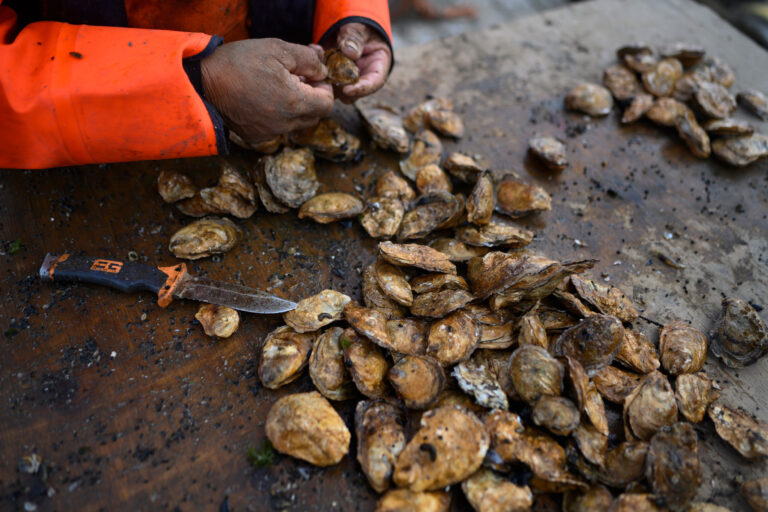
Future studies could verify if longer nursery periods, or alternative methods to avoid exposure to predators, can exceed these results. The nursery period of 12 weeks yielded the best results with clusters with a median of 6 animals and 11.4 g of flesh per oyster by the end of the experimental period. T3W and T5W showed a lower survival during the two-week period right after the transference of the cultch from the nursery to the grow out phase, likely linked to premature exposure of the spat in the cultch strings to predators such as fish. The nursery periods varied according to the experimental treatments: T3W - 3 weeks T5W - 5 weeks and T12W - 12 weeks. The experiment duration was 47 weeks, involving an indoor phase, the larval settlement, and an outdoor phase, encompassing the nursery and grow out. A production-scale experiment was performed to analyze the technical viability of the spat-on-shell system in the SCIB.

Santa Catarina Island Bay (SCIB) contributes the largest production of cultivated oysters in Brazil, nearly all of which is based on hatchery produced cultchless oyster spat, whose metamorphose is induced using a solution of epinephrine. For small-scale growers, the stacked aquaculture trays are advantageous for several reasons: reducing handling time, uniform shell distribution within tanks, environmentally friendly alternative, and ease of cleaning detritus between shell layers. Settling efficiency was lowest in 2013 using aquaculture trays compared to other years while aquaculture trays in 2015 and wire baskets in 2011 resulted equally higher settling efficiency. Average setting efficiency was estimated at 28%, 23%, 17%, and 29% in the respective 2009, 2011, 2013, and 2015 remote sets while gear specific settling efficiency (%) include 28% for mesh bags in 2009, 22% for mesh bags and 33% for wire baskets in 2011, 17% for aquaculture trays in 2013, and 30% for aquaculture trays and 22% for wire baskets in 2015. Shell containment gears included diamond, plastic mesh bags (2009, 2011), wire baskets (2011, 2015), and plastic aquaculture trays (2013, 2015). Over the past four remote sets (2009, 2011, 2013, 2015), three types of shell containment gear were utilized to monitor and compare the setting efficiency rate and post-set survival. For small-scale growers, the stacked aquaculture trays are advantageous for several reasons: reducing handling time, uniform shell distribution within tanks, environmentally friendly alternative, and ease of cleaning detritus between shell layers.Keywords: Eastern oyster Crassostrea virginica Outdoor flow-through tank system Larval survival Set efficiency Method feasibility a b s t r a c t Remote-setting of oyster, Crassostrea virginica, larvae from the disease-resistant Haskin NEH line is performed every other year in Delaware to supply small-scale oyster enhancement efforts, citizen oyster gardening program.


Remote-setting of oyster, Crassostrea virginica, larvae from the disease-resistant Haskin NEH line is performed every other year in Delaware to supply small-scale oyster enhancement efforts, citizen oyster gardening program.


 0 kommentar(er)
0 kommentar(er)
